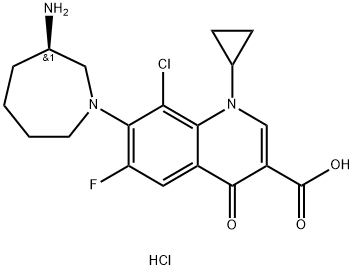Besifloxacin is a new fluoroquinolone antibacterial for ophthalmic
use. It is indicated for the treatment of bacterial conjunctivitis, one of
the most common ocular infections encountered in the primary care
setting. Although the previously marketed fluoroquinolones ciprofloxacin, levofloxacin, ofloxacin, gatifloxacin, and moxifloxacin have been
widely used to treat bacterial conjunctivitis, their continued utility is
hampered by the emergence of resistance among key ocular isolates
such as Staphylococcus aureus. Besifloxacin is the first
fluoroquinolone developed exclusively for topical ophthalmic use.
Unlike the previously marketed fluoroquinolones, besifloxacin has not
been used systemically and is not in development as a systemic agent. Its
exclusive indication as a topical agent is expected to reduce the overall
environmental exposure of bacteria to besifloxacin, which may contribute to a lower risk for the emergence of bacterial resistance. Fluoroquinolones derive their antibacterial activity via inhibition of two essential
bacterial enzymes, DNA gyrase and topoisomerase IV, which regulate
processes of DNA replication. Besifloxacin inhibits DNA gyrase and topoisomerase IV from Streptococcus pneumoniae (IC50 = 1 and 0.4 mg/ L, respectively) and Escherichia coli (IC50 = 1 and 10 mg/L, respectively).





